Daitoku-ji is a Kyoto temple dating from the early 14th century. Over time, 22 sub-temples have been added to the complex making the 56 acres that comprise the grounds a super destination for enjoying Japanese gardens. A number of Daitoku-ji’s gardens are only open a few weeks each year – others are usually open to the public. Some allow photography, some limit photography, and others allow no photography at all. Here is a glance at the sub-temples I visited in November.
Obai-in
I walked right in to the first garden I passed, Obai-in. Later I found out it’s rarely open to the public. Although they don’t allow photographs in the main gardens, they do allow photographs in the courtyard just inside the entrance. It turned out to be one of my favorite gardens of the day, and I didn’t see anyone inside until I was on my way 0ut. Here are some shots from the entrance area.

Stone lantern
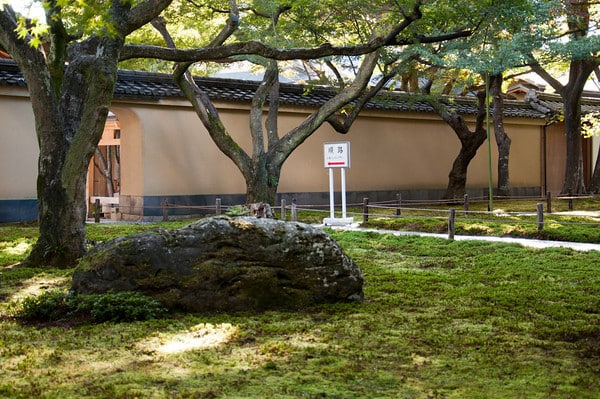
Stones and moss beneath maples.
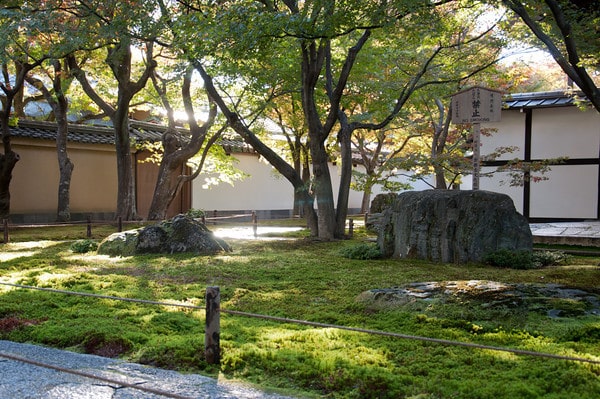
Obai-in dates from the 16th century – these rocks have been sitting here for a while
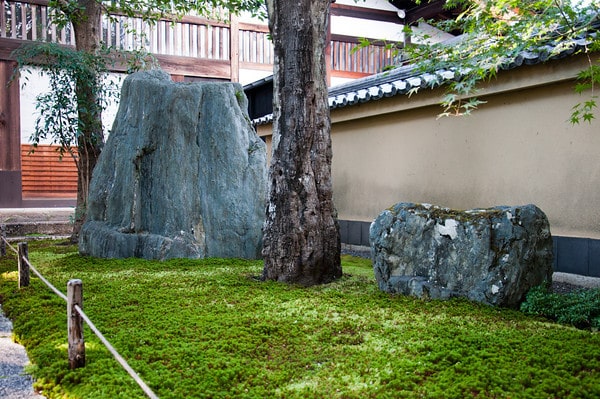
Stones and pine bark in moss
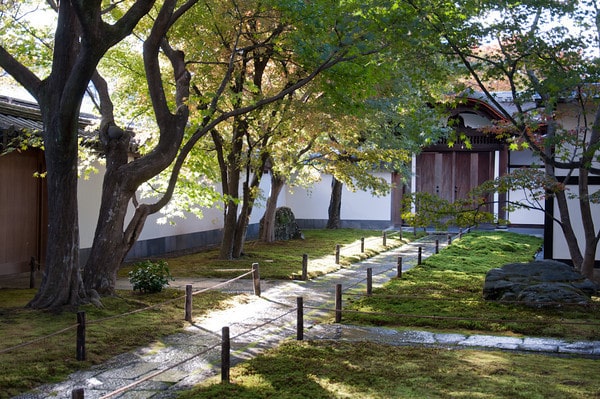
Path and gate to the side garden
Ryogen-in
I was very excited to visit the next temple I came to – Ryogen-in. I’d seen photographs of the temple’s five gardens in many Japanese landscape books. The main garden is called Isshidan.
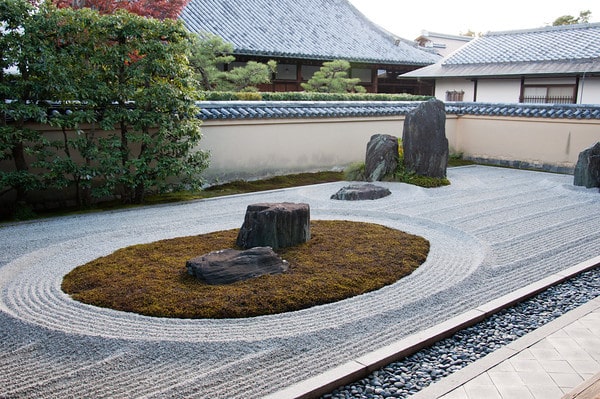
Isshidan
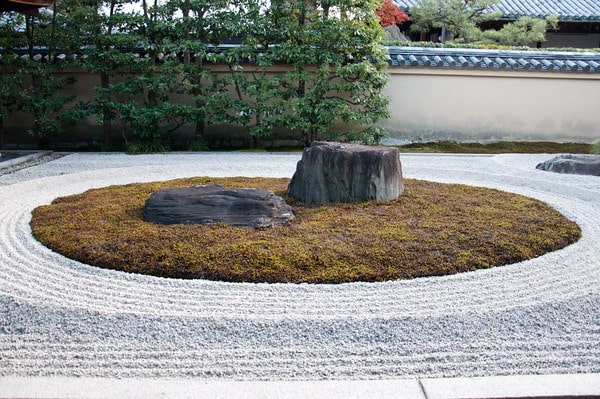
The moss mound is known as Tortoise Island – the white sand, the sea
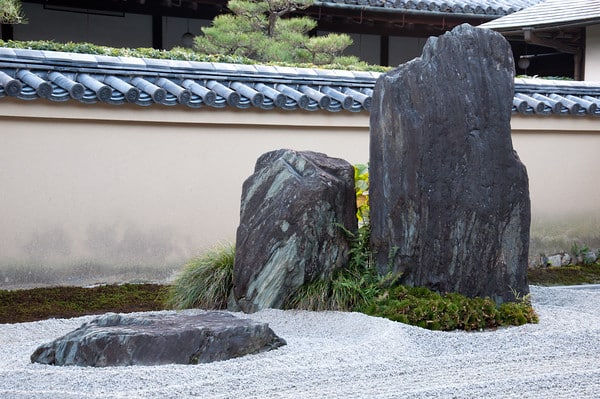
The tall stone symbolizes Mt. Horai
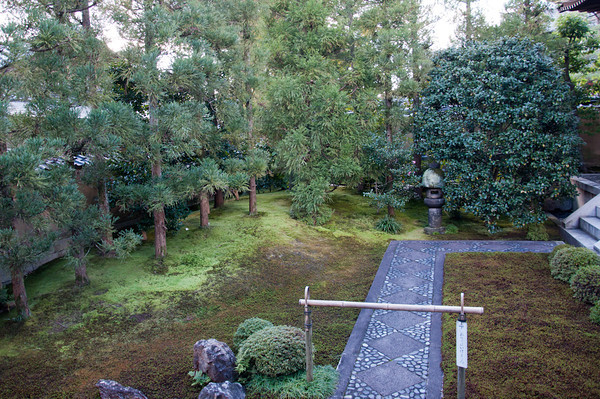
Path leading between gardens
My favorite of Ryogen-in’s gardens is Ryogin-tei. In many ways, It might be my favorite garden anywhere. A few stones are arranged toward the back of a sea of moss. Some shrubs and a single tree complete the scene. It is the oldest of Daitoku-ji’s gardens, created by a famous artist of the time, Soami.
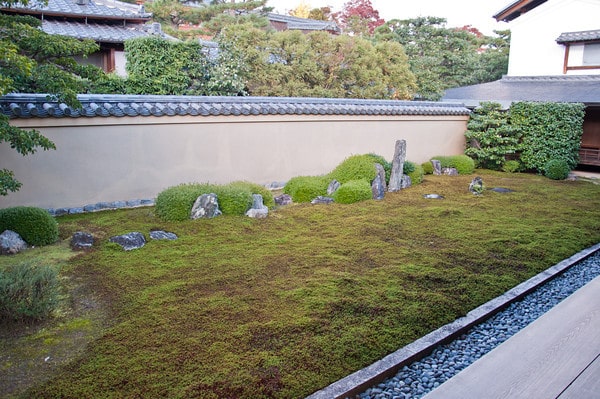
Ryogin-tei
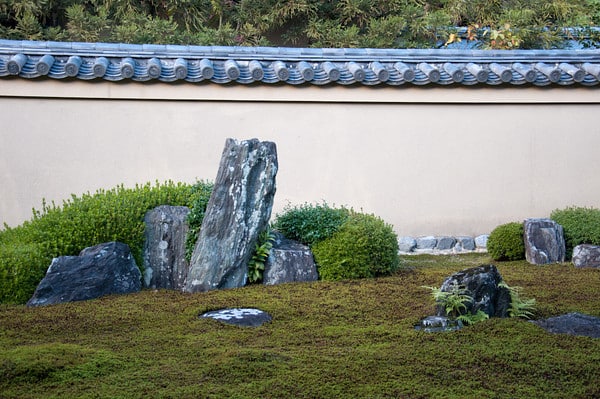
The iconic stones at the garden’s center
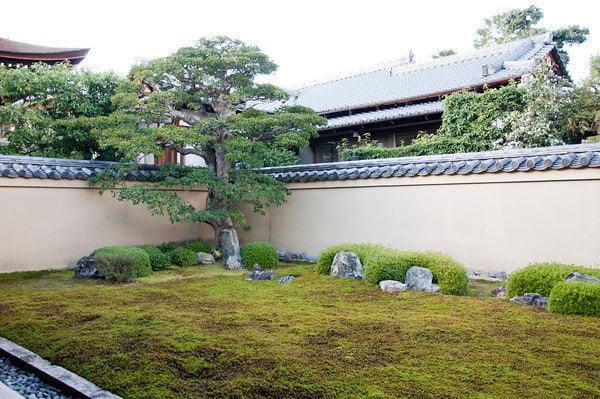
The garden’s lone tree
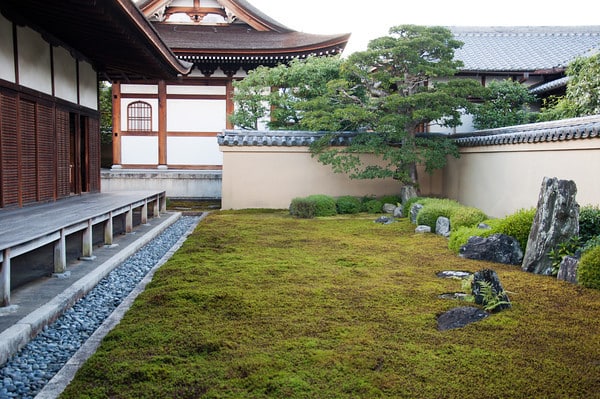
It’s a very small garden
Korin-in
A short walk brought me to Korin-in, the family temple of Saemonno-suke Hatakeyama, Lord of Noto prefecture circa 1520.
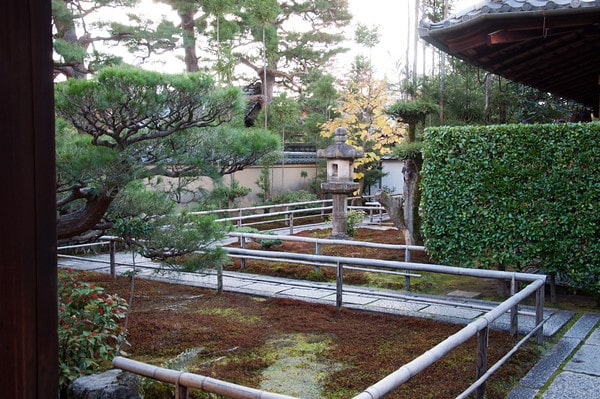
Entrance area
Korin-in’s main garden expresses the idea of paradise. “An azalea bush and stones are the symbol of the Elysian mountain,” says the Temple brochure.
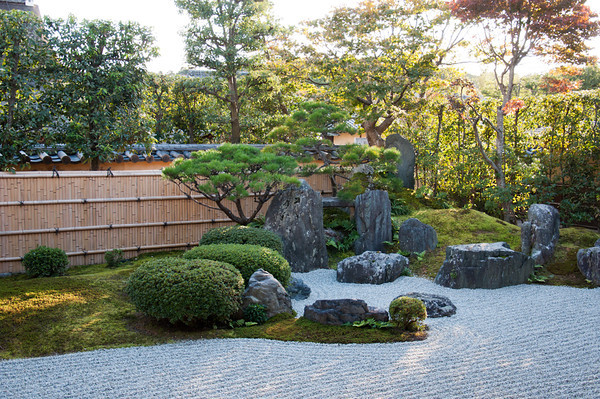
The heavenly scene at Korin-in
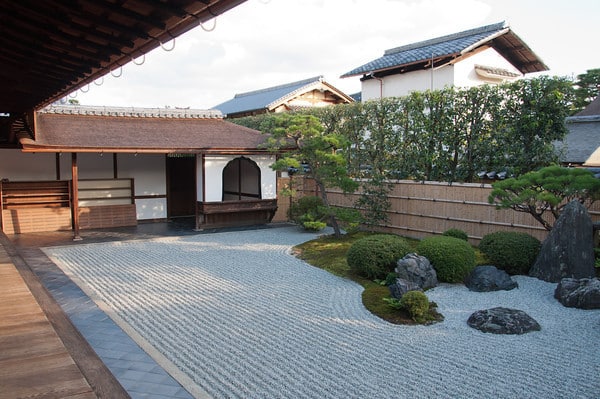
Looking toward the entrance
Many gardens featured “windows” like the one pictured above. Some gardens, like Hoshun-in, only allowed photography through such a window.
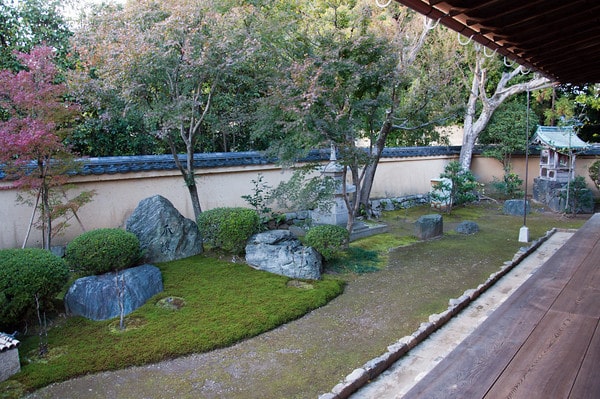
Side garden
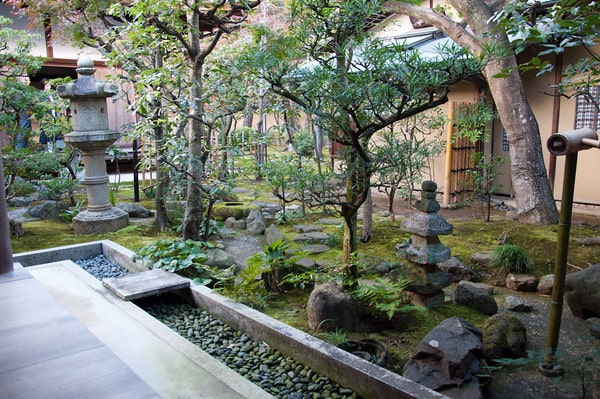
Mossy garden between buildings
Hoshun-in
Hoshun-in features two gardens, Kagantei and Donkokaku. Donkokaku is one of Kyoto’s famous rokaku (pavilion) including Kinkaku, Ginkaku and Hiunkaku. No photography allowed. The following shots show Kagantei through the “window” at the garden’s entrance.
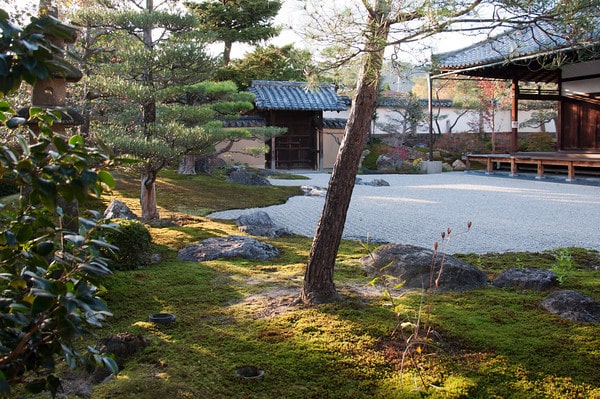
Kagantei Garden
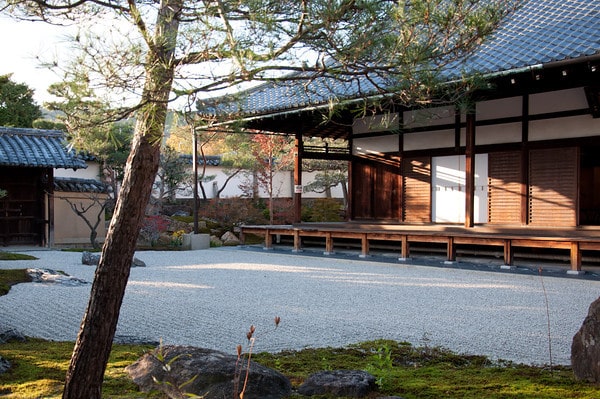
Main Hall and Kagantei at Hoshun-in
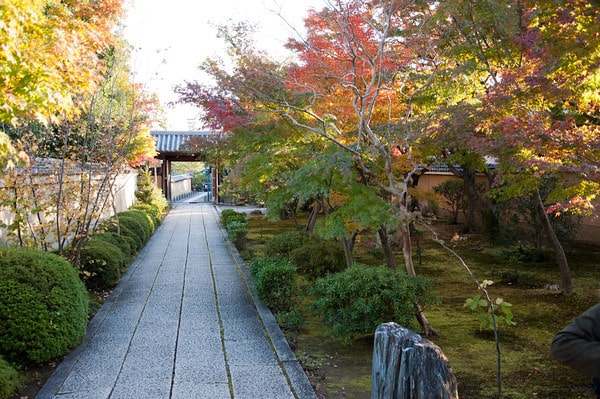
Hoshun-in entrance garden
Daisen-in
Daisen-in is one of the most famous sub-temples at Daitoku-ji. The small rock garden follows the flow of water through a dry scene around two sides of the temple. No photos are allowed, however you can take a virtual tour online. From the brochure: “If you would like to be served green tea while looking at this garden, please try to say ‘O-cha kudasai,’ and you will have another unforgettable memory.” Out front is a crazy white pine.
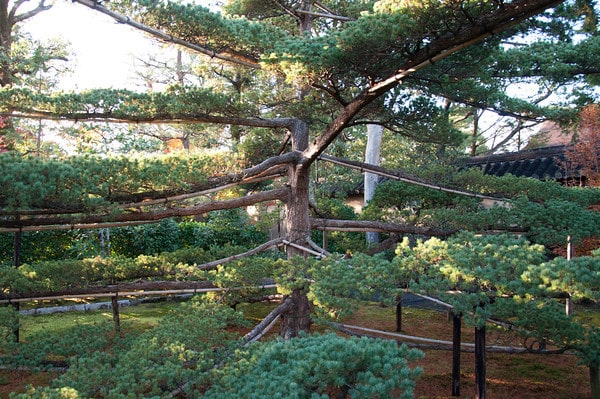
White pine in front of Daisen-in
Koto-in
The last temple I visited in the Daitoku-ji complex is Koto-in. The temple was established in 1601 at the behest of Hosokawa Tadaoki, a military leader in the campaign that led to the Tokugawa shogunate. Tadaoki devoted his later life to the study of Zen. His wife, somewhat incongruously, was a devout Catholic.
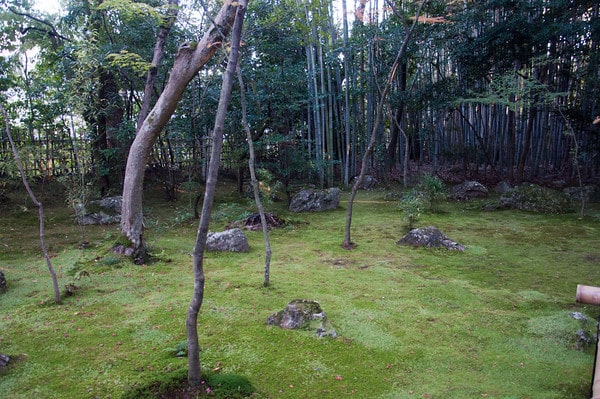
Garden entrance
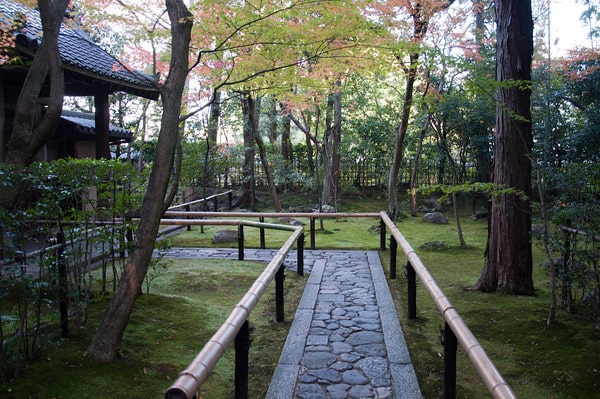
Looking toward garden entrance
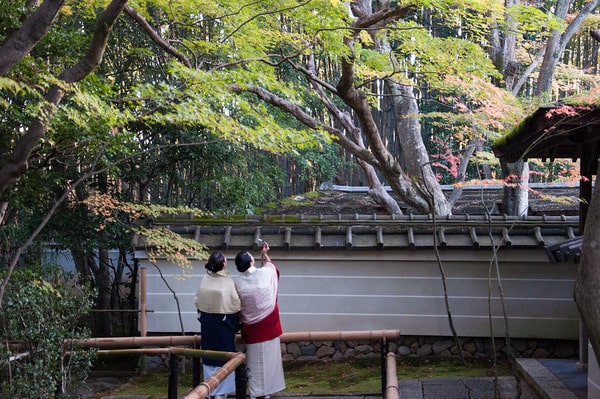
A common sight in Kyoto in fall
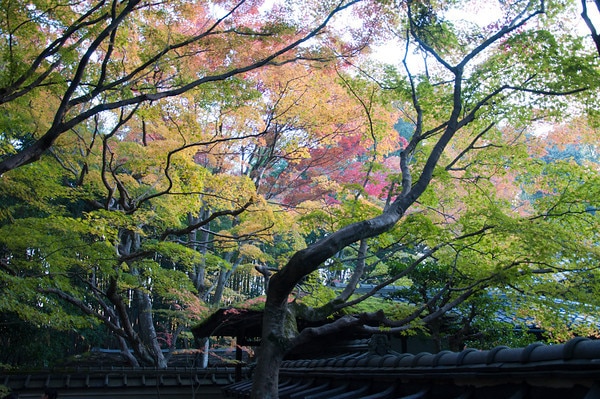
The trees they were looking at
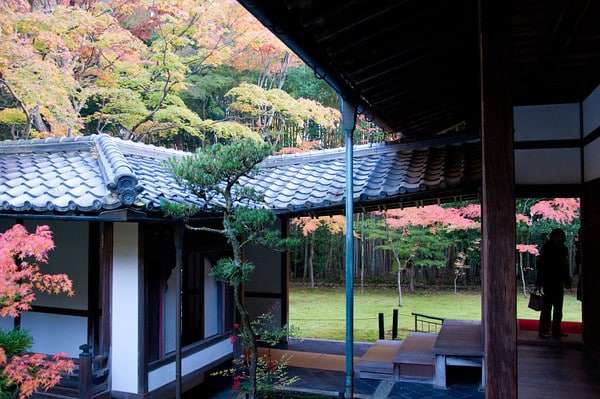
Approach to the main garden
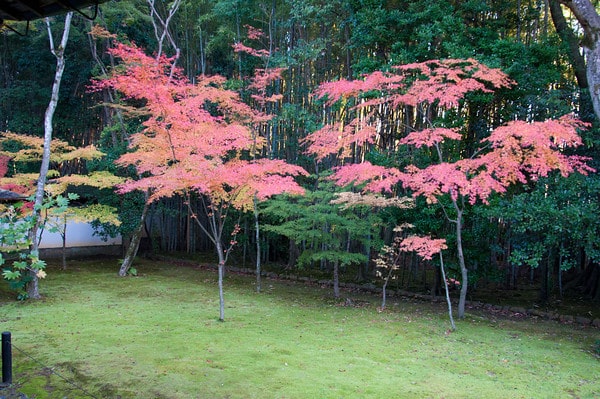
The main garden – super use of color
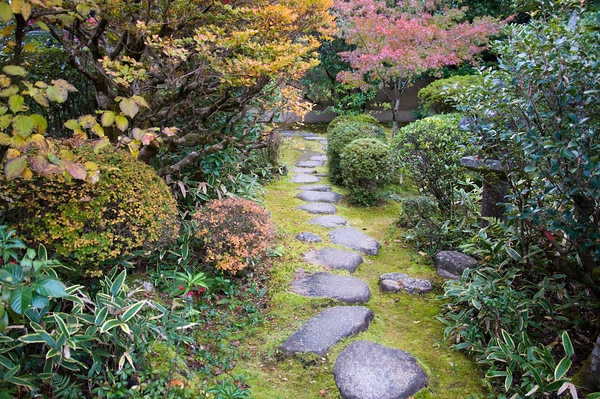
Stone path
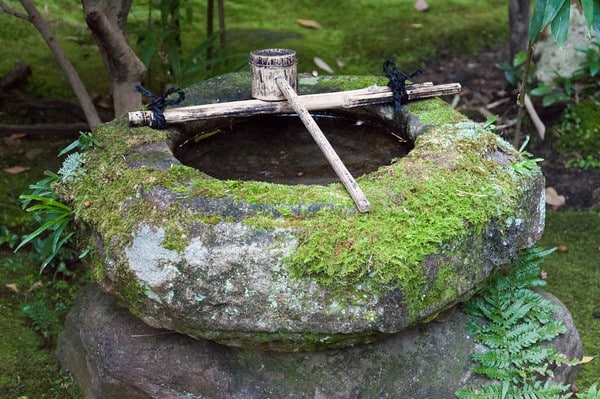
Wash basin
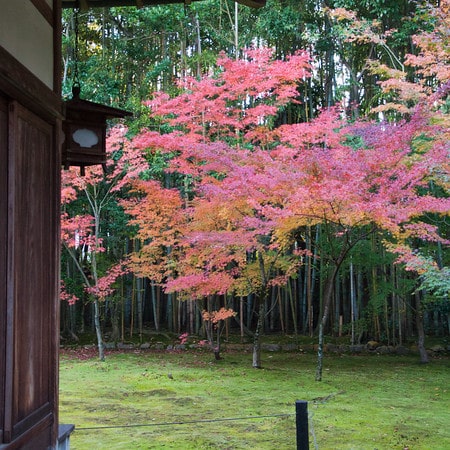
What color!
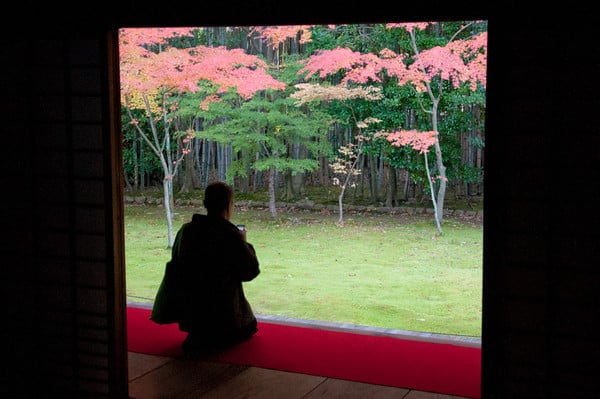
The view from the tea house
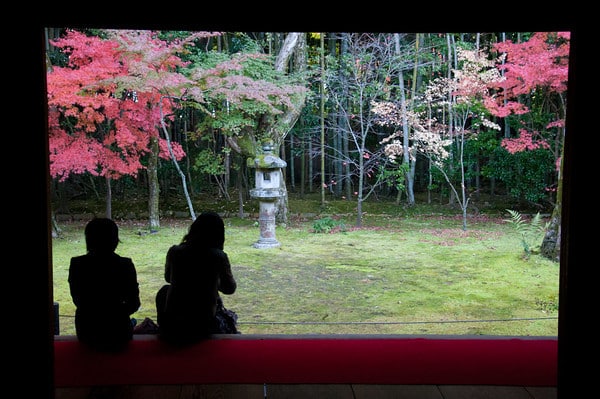
Another view from the tea house
Tomorrow: temple week continues with Kiyomizudera at night!
Subscribe to Bonsai Tonight
New Posts Delivered Every Tuesday and Friday
gaycarboys says
Very serene
Daniel Dolan says
Jonas:
Beautiful photography.
Question about the very rounded azalea shrubs which are closely placed next to stones such as at Korin-in image. If I am to read the stones as mountains what are the shrubs? Are these also mountainous forms covered with a green landscape?
Thank you.
D/D
xwires says
Hi Daniel – thanks for the comment. I don’t know if there’s a direct analogue or not. I’ll let you know if I learn of one.